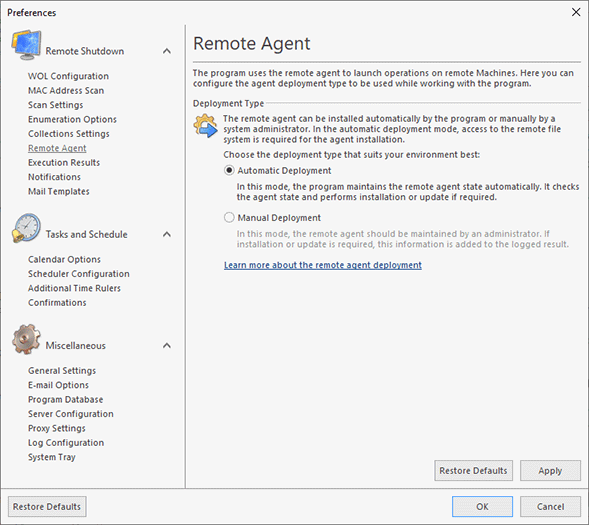Remote Agent Page
Remote Shutdown uses an agent to operate remote Machines. This agent can be installed by the program on demand or by a system administrator at any time. The agent deployment type is configured on the Remote Agent preference page Pic 1. To change the deployment type, click the Preferences button in the Application Menu and switch to the Remote Agent preference page using the appropriate link in the navigation bar on the left of the Preferences dialog within the Remote Shutdown group.
On the Remote Agent page, you are offered to choose if the state of the remote agent should be maintained automatically by the program or the remote agent deployment should be overseen by the network administrator. The difference between these two modes is that when the Automatic Deployment mode is used, Remote Shutdown requires administrative access to the remote file system so the remote Machine should be configured to allow access to its file system. Access to the file system is required to perform the remote agent installation and updates. When the Manual Deployment mode is used, the program does not need to access the remote Machines' file system to work with the agent; however the remote operation will fail if the remote agent installation or update is required.
In the Manual Deployment mode, the program adds an information to the Execution Results when it fails to operate the remote Machine because the required remote agent installation or update cannot be performed.
For manual deployment, the network administrator should use one of the installation packages supplied with the program. Those packages are available in the Setup folder of the program installation – this folder can be reached using the Remote Agent Setup link in the program sub-menu of the Start menu. The installations are shipped in form of both an executable file, which is platform-independent, and two different platform-dependent MSI files, which can be used, for example, for automatic deployment through GPO.
